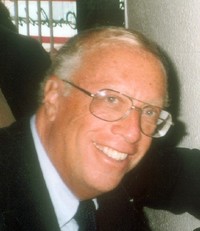By Rabbi Dr. Israel Drazin

BOCA RATON, Florida — There is a remarkable similarity between Noah and Adam that should prompt us to think and understand each of the two biblical figure in a deeper manner. The following are some of the similarities.
- Both were the fathers of all future generations.
- Their names indicated their character. Adam, which derives from the word adama, earth, was created from the earth. Noah means restful, quiescent. Noah was an inactive man. He did what God commanded, but no more. He needed to drink himself into a drunken stupor to ease his anxiety.
- Each had three sons listed in the Bible.
- One of their children caused them great pain. Cain killed Abel and Ham did an unmentioned act to his father that prompted Noah to curse Ham’s son Canaan.
- One of each of their children was the ancestor of the Jewish people, Adam’s son Seth and Noah’s son Shem.
- Their two best sons were according to tradition not first born, as are most of the biblical heroes.
- The two sons were born late in their father’s life, Adam’s son Seth when he was 130 years old, apparently long after the birth if Cain and Abel, and Noah’s three sons when he was 500 years old. (According to tradition, Shem was born when he was 502.)
- The events in their lives followed God knowing that something was wrong, Adam and Eve eating the forbidden fruit prior to their exile from the Garden of Eden, and the corruption of Noah’s generation before the flood.
- Adam and Noah lived in a safe place for a short period, Adam in the Garden of Eden and Noah in an ark.
- They suffered after leaving this place. Adam was forced to work and Noah was mistreated by his son Ham.
- A tree or vine is a significant item in the two tales, the tree of good and evil for Adam and the vine for Noah.
- Imbibing is central to the two stories, Adam eating the forbidden fruit and Noah’s excessive drinking of wine.
- Adam and Noah were imperfect men. They performed irrational acts, Noah getting drunk and Adam disobeying God. Their imperfection reflects the depiction of all biblical figures and human’s today. Even Abraham erred when he claimed that Sarah was his sister and not his wife.
- The two were involved with animals, Adam to name and Noah to save them.
- The Bible is silent about what exactly Adam and Noah’s sons did. It tells us that Cain was provoked by something that Abel said, but does not disclose what he said, nor does it describe Ham’s act.
- Each received a command from God. Adam not to eat a certain fruit. Noah to build an ark and save land and air animals.
- Both men blamed a relative for their misdeed. Adam told God that his wife Eve caused him to eat the prohibited fruit and Noah criticized his grandson Canaan for doing something to him while he was drunk. The two accusations seem unjustified.
- An animal spoke to the two of them in an indirect manner: a serpent to Adam through Eve, a raven and dove to Noah by showing through their behavior whether the flood receded. The raven returning to the ark indicated that the flood water still covered the earth, the dove not returning showing the flood water diminished.
- The two animals, Adam and Eve’s serpent and Noah’s raven are usually associated with improper or undesirable acts.
- An innocent person or item is punished by a curse in the two tales. In Genesis 3:17, God said to Adam, “Cured is the ground because of you,” in 9:28, Noah declares “Cured be Canaan” who was the son of Ham and about whom the Bible does not indicate he mistreated Noah.
- God or a symbol of God spoke to them after they acted. The voice of God criticized Adam and Eve after they ate the forbidden fruit. The dove, a symbol of divine peace informed Noah about the flood water by its behavior.
- After 10 generations, a prominent man appeared, Noah after Adam, Abraham after Noah.
- They lived for hundreds of years, most likely because years during their life was a lunar cycle today. The life span was reduced after them.
- Someone or some things were saved during their lifetime. Cain was not executed for killing Abel and the fish did not die in the flood.
- Neither is depicted instructing their children or doing anything on their own initiative to assure their descendants a pleasant life.
*
Rabbi Dr. Israel Drazin is a retired brigadier general in the U.S. Army chaplain corps. He is the author of more than 50 books.